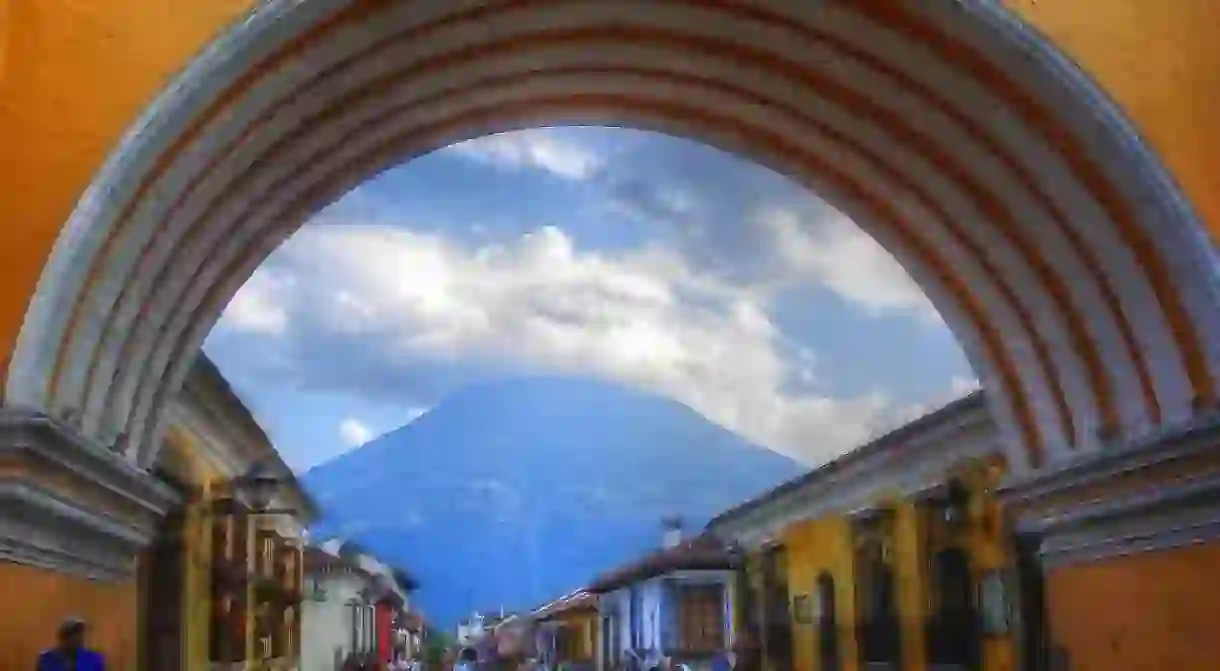A Brief History of Antigua’s Santa Catalina Arch

Antigua Guatemala is well known for its rich colonial history and cultural attractions, but none are so iconic as the Santa Catalina Arch. Standing above the cobbled streets and in front of the hulking Volcán de Agua, this saffron-yellow arch has become the symbol of Antigua and the central image on most postcards. To critics it might just be another arch, but to locals it represents the resilience of the city and a history than spans four centuries.
The Santa Catalina Arch was built in 1694 on what is now known as Calle del Arco, or “street of the arch.” Rather than being built for aesthetic reasons, there was purpose behind the arch’s construction. On either side of the arch are two convents, the Convent of the Virgin and the Convent of Santa Catalina. Within the convents lived cloistered nuns, and in the 1690s they lived on one side of the of the arch and taught at a school on the other.

The nuns had taken vows of seclusion and had to avoid all contact with the outside world; even being seen in public was off-limits. While attempts had been made to find a school property that bordered the convent, the religious order had no luck and the nuns found themselves in a predicament. They needed to teach, but could hardly just walk out the door onto the bustling street and cross it with the public.

In order for the nuns to go incognito, the idea of a footbridge was proposed, and Santa Catalina Arch was built to join the school and the convent. Within the arch is a hidden passageway enabling the nuns to cross the street without being seen—something you would never guess if you stood below it. The arch has suffered damage over the years, especially in the devastating earthquake of 1773, but it has survived into modernity and has become a potent symbol of the city’s resilience. The French-style clock was added in the 1800s and needs to be wound every three days.

Today the convent is a hotel, the Hotel Convento Santa Catalina Martir, and the street is a hotspot for public events and gatherings. You won’t find any nuns walking across the arch, but you’ll find plenty of tourists eager to snap a photograph of this unmistakably Antigua monument, which has been recreated in countless photographs and paintings. On a clear day you can see the entire Volcán de Agua through the arch—an appropriately dramatic background for such a historic landmark.













